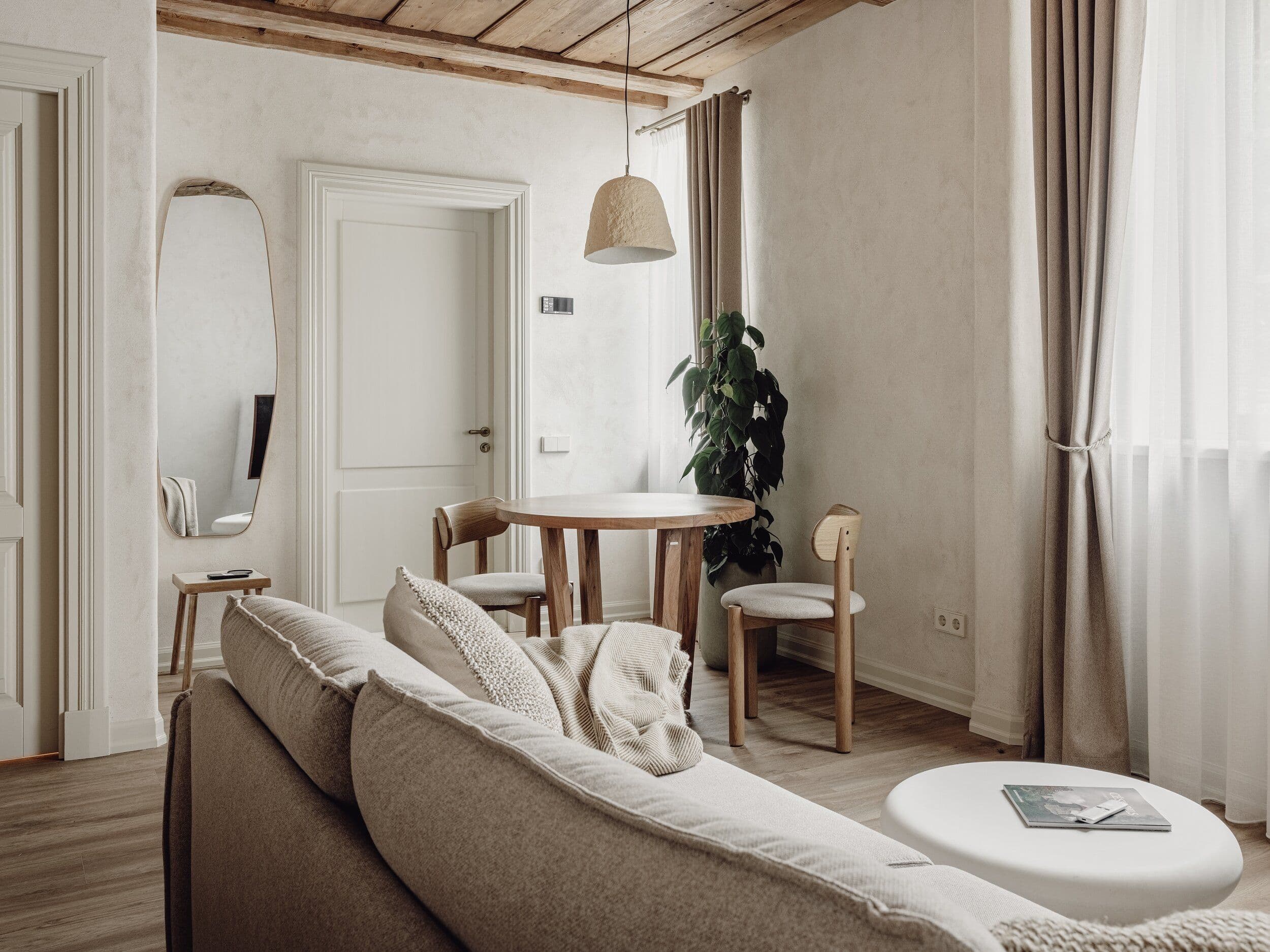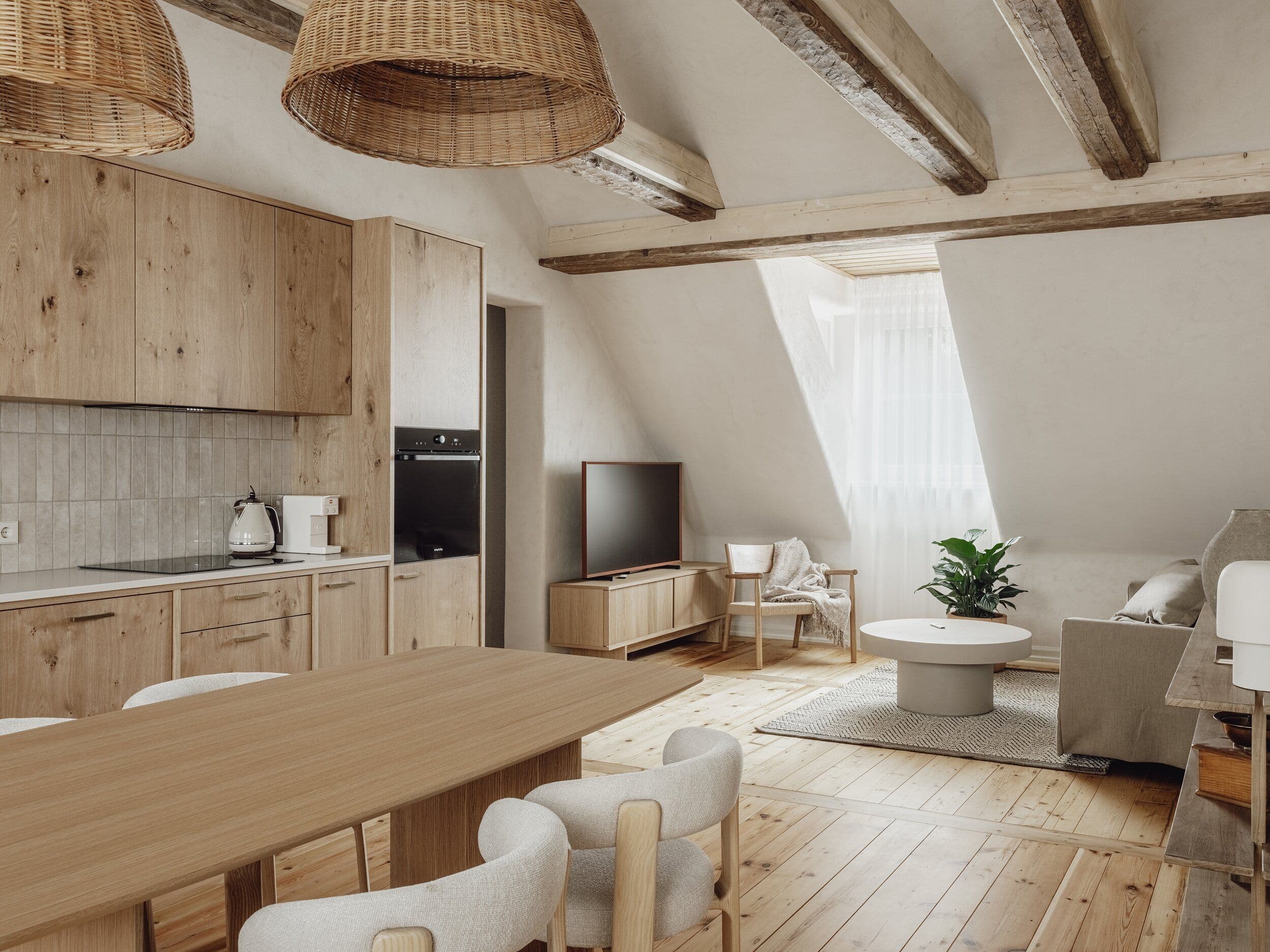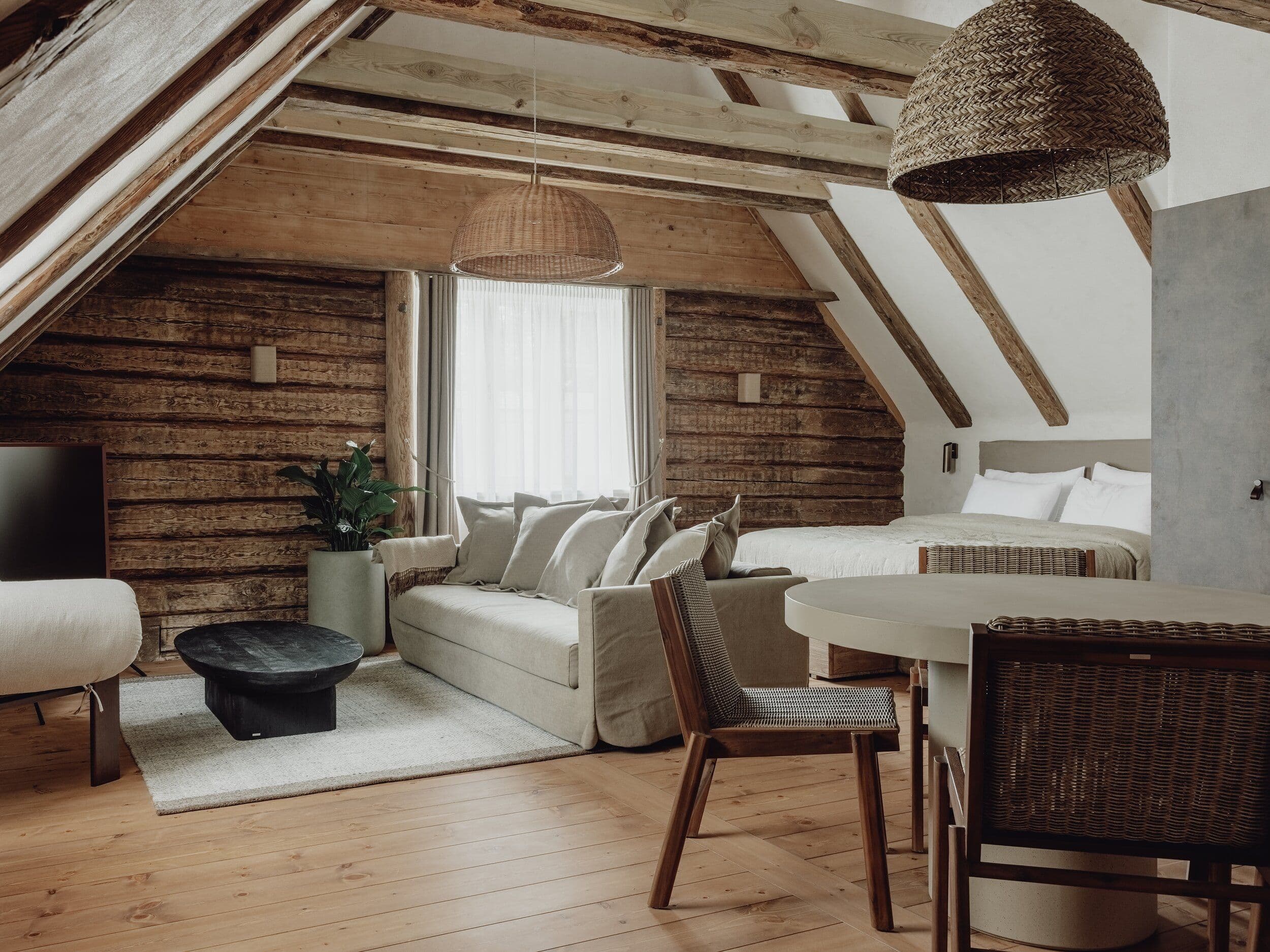At the end of August, the Pastor’s House in the developing Konrāds Quarter in Cēsis opened its doors to the wider public. “Its dormant status allowed us to decide how best to translate the respect we felt toward this building into reality,” emphasizes architect Pēteris Blūms. He recalls that even before work began, he asked project manager Andis whether he was psychologically and financially prepared to treat the building as a true architectural monument—despite the fact that, formally, it was not recognized as one. The complete development of the Quarter is expected next year, creating a new cultural and artistic space in the very heart of the Old Town.
“In 2021, an architectural-artistic study was carried out by SIA ‘Arhitektoniskās izpētes grupa’. The key finding was that the house may consist of three parts. It was once thought that the oldest section, from the late 18th century, had been drawn by Johann Christoph Broce, but detailed research showed that the ‘Broce end’ does not exist—rather, one section had later been extended. The façade still reveals this transition. Over time, two mezzanines were also added,” Blūms recalls of the early restoration process.
Looking further back in history, he explains: “In the 1630s–40s this site was mentioned as hosting a Latvian children’s school. By the last quarter of the 17th century, a building stood here described as the newly built non-German children’s school. Perhaps there was another construction phase in between. Beneath it all lies a cemetery—the medieval settlement layers are visible at the far end of the house. Higher up are burials, and deeper down, medieval structures dating back to the 14th century.”
When asked if such archaeological findings delayed the project, Blūms replies: “Yes and no! It was already known from records that there was a cemetery here. This whole territory is a state-level archaeological and urban heritage site. So we expected it, but no one predicted the research would take so long—about half a year or more. That can never be foreseen. The duration depends on the volume of finds. And the archaeologists worked under dreadful conditions—snow, rain, freezing weather.”
He notes that not only the cultural layer but also the “spatial-temporal layer” shaped by centuries matters: “The current Pastor’s House continues the story of the buildings beneath it. Their outlines, lines, and corners influence what comes after.”
Blūms praises the dedication of the team, especially structural engineer Ilmārs Andrējevs-Empelis: “It’s crucial to work with people who understand old houses, who know what they’re doing.”
The restoration project was built around careful preservation: “We tried to understand what remained and what could be saved—from the structural plan to windows, doors, log walls, and floors. The main load-bearing walls were preserved. The building, once a school, then later divided into Soviet-era apartments—including one where the pastor himself had lived, leaving behind piles of papers—was replanned. Times have changed; it cannot be a school anymore, nor a pastor’s house. Adaptation to new needs is the key to its survival.”

Where possible, original log elements and walls were retained, though hidden behind insulation. Old materials were reused, passing again through craftsmen’s hands, showing people that such cycles are possible. Removing thick layers of oil paint to reach the authentic surfaces was painstaking. “The house itself participates in the process, contributing its own ‘gifts’,” says Blūms, speaking of it as a living being. “I truly call myself a doctor for old houses. This is rehabilitation—like putting a body back together piece by piece. A house also has a soul.”
Finally, he reflects on the building’s shifting status: “Before work began, it was just an old house, no longer even officially listed as a monument—it had been removed from registers in the 1990s. Its dormant state allowed us the freedom to decide how to honor it. But from the very start, I reminded the team: we must treat it with the dignity of an architectural monument, whether or not it is formally recognized as such.”










